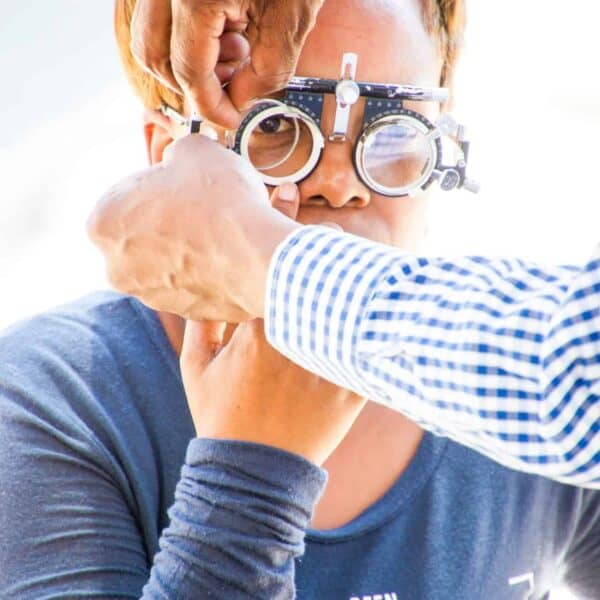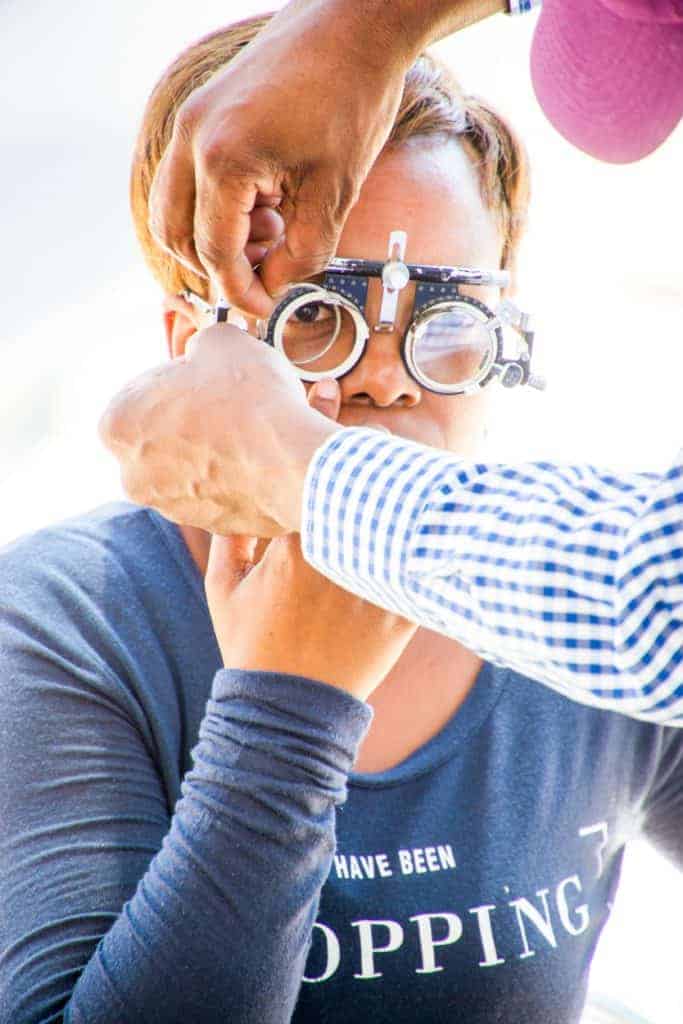
Low Vision Awareness Month
February 7, 2020

February is National Age-Related Macular Degeneration and Low Vision Awareness Month. While most people have heard of macular degeneration, the same cannot be said for “low vision.” In fact, macular degeneration is a cause of low vision!
Low Vision Defined
According to the National Eye Institute: “Low vision is a vision problem that makes it hard to do everyday activities. It cannot be fixed with glasses, contact lenses, or other standard treatments like medicine or surgery.” The hallmark of the low vision definition is that everyday activities are affected. Decreased vision usually interferes with tasks, such as reading, driving, watching tv, and walking in unfamiliar settings outside of one’s home.
There are no specific eyesight requirements to qualify as low vision because there are other aspects of vision that can be affected while maintaining normal central vision. Low vision is most common in people over 65 years old, however, people of all ages can be affected. In order to be considered ‘low vision’ the vision loss must be permanent. People with low vision are not necessarily blind. They just have a lesser amount of vision than most people.

Causes of Low Vision
The most common causes of low vision include:
- Age-related macular degeneration
- Diabetes
- Glaucoma
- Eye injury
- Certain genetic conditions
Types of Low Vision
- Central vision loss (unable to recognize faces, read, drive, etc.)
- Peripheral vision loss (unable to see the “sides” of vision)
- Night blindness (unable to see in dim lighting)
Preventing Vision Loss
If it is possible, the best way to prevent future vision loss is to treat the underlying source or cause of the low vision. Stay healthy – this means controlling blood pressure and blood sugar, don’t smoke, maintain a healthy diet and exercise. Having regular comprehensive eye exams can help detect eye conditions in the early stages. A timely diagnosis and treatment can help minimize vision loss in most cases.
Low Vision Resources

Although we are unable to reverse vision loss related to low vision, there are ways to improve daily tasks through the use of vision aids and vision rehabilitation. Some optometrists are low vision specialists. The specialty focuses on providing individuals with the best tools for improving vision and training patients on how to correctly use visual aid devices. There are different types of low vision devices, such as magnifiers, special lights, large-print reading materials, and other technologies to assist in utilizing the remaining vision to its greatest potential.
To learn more about ways to cope and function with permanent vision loss, use the following resources for support:
– Bureau of Blindness and Visual Services
– American Macular Degeneration Foundation®
– Vision Aware™